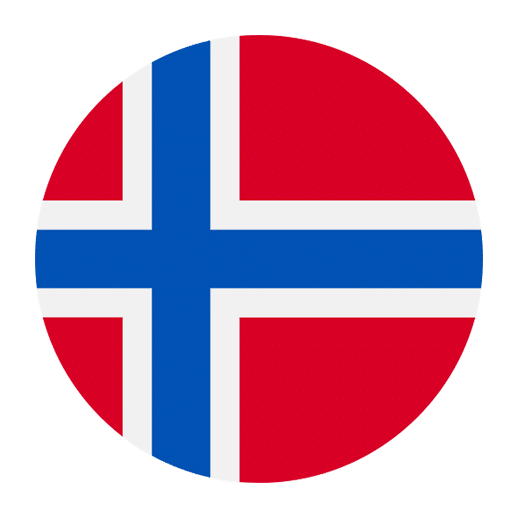Learning a new language is an exciting journey, and one of the most enjoyable aspects of it is discovering the vocabulary related to food and dining. If you are learning Norwegian, understanding food and dining terms will enrich your experience, whether you’re planning a trip to Norway, want to read Norwegian recipes, or simply want to impress your Norwegian friends.
Common Food Items
To begin with, let’s learn the names of some common food items in Norwegian. These words will help you navigate a Norwegian grocery store or menu.
– **Bread**: brød
– **Milk**: melk
– **Cheese**: ost
– **Butter**: smør
– **Egg**: egg
– **Meat**: kjøtt
– **Fish**: fisk
– **Chicken**: kylling
– **Fruit**: frukt
– **Vegetables**: grønnsaker
Fruits and Vegetables
Knowing the specific names for fruits and vegetables can be particularly handy. Here are some common ones:
– **Apple**: eple
– **Banana**: banan
– **Orange**: appelsin
– **Grapes**: druer
– **Strawberry**: jordbær
– **Tomato**: tomat
– **Potato**: potet
– **Carrot**: gulrot
– **Lettuce**: salat
– **Onion**: løk
Dining Out
When dining out in Norway, understanding the terminology used in restaurants can make the experience much smoother. Here are some useful terms:
– **Restaurant**: restaurant
– **Menu**: meny
– **Waiter/Waitress**: kelner/servitrise
– **Table**: bord
– **Reservation**: reservasjon
– **Bill/Check**: regning
– **Tip**: tips (though tipping is not very common in Norway)
– **Dish**: rett
Ordering Food
When you’re ready to order, these phrases might come in handy:
– **I would like…**: Jeg vil gjerne ha…
– **Can I have the menu, please?**: Kan jeg få menyen, vær så snill?
– **What do you recommend?**: Hva anbefaler du?
– **I am allergic to…**: Jeg er allergisk mot…
– **Can I have the bill, please?**: Kan jeg få regningen, vær så snill?
Traditional Norwegian Dishes
Norway has a rich culinary tradition. Here are some traditional Norwegian dishes you might encounter:
– **Lutefisk**: Fish that has been dried and then soaked in a lye solution.
– **Rakfisk**: Fermented fish, often served with flatbread and sour cream.
– **Pinnekjøtt**: Dried, salted lamb ribs, usually served around Christmas.
– **Kjøttkaker**: Norwegian meatballs, often served with potatoes and gravy.
– **Rømmegrøt**: A sour cream porridge, typically served with sugar, cinnamon, and butter.
Breakfast, Lunch, and Dinner
In Norway, meals are named as follows:
– **Breakfast**: frokost
– **Lunch**: lunsj
– **Dinner**: middag
Norwegians often enjoy a simple, open-faced sandwich for breakfast and lunch, known as **smørbrød**.
Food Preparation Terms
Cooking at home or following a recipe in Norwegian can be a fun way to practice the language. Here are some common cooking terms:
– **To bake**: å bake
– **To boil**: å koke
– **To fry**: å steke
– **To chop**: å hakke
– **To mix**: å blande
– **Recipe**: oppskrift
– **Ingredients**: ingredienser
Utensils and Appliances
Knowing the names of kitchen utensils and appliances can also be useful:
– **Knife**: kniv
– **Fork**: gaffel
– **Spoon**: skje
– **Plate**: tallerken
– **Glass**: glass
– **Cup**: kopp
– **Pan**: panne
– **Oven**: ovn
– **Stove**: komfyr
Dietary Preferences and Restrictions
If you have specific dietary preferences or restrictions, it’s important to know how to communicate them. Here are some phrases that might help:
– **I am vegetarian**: Jeg er vegetarianer
– **I am vegan**: Jeg er veganer
– **I am allergic to gluten**: Jeg er allergisk mot gluten
– **I am lactose intolerant**: Jeg er laktoseintolerant
Shopping for Food
When shopping for food in a Norwegian grocery store, these terms might come in handy:
– **Grocery store**: matbutikk
– **Market**: marked
– **Bakery**: bakeri
– **Butcher**: slakter
– **Fish market**: fiskemarked
– **Cash register**: kasse
– **Shopping cart**: handlevogn
– **Bag**: pose
Special Occasions and Festive Foods
Norway has many special occasions that involve unique foods. Here are a few examples:
– **Christmas**: jul
– **Christmas Eve**: julaften
– **Easter**: påske
– **Birthday**: bursdag
– **Cake**: kake
– **Cookies**: kjeks
– **Candy**: godteri
Beverages
Understanding the names of beverages is also essential. Here are some common ones:
– **Water**: vann
– **Coffee**: kaffe
– **Tea**: te
– **Juice**: juice
– **Beer**: øl
– **Wine**: vin
– **Milk**: melk
– **Soda**: brus
Alcoholic Beverages
Norway has strict regulations regarding the sale of alcoholic beverages. Here are some terms related to alcohol:
– **Alcohol**: alkohol
– **Liquor store**: vinmonopol
– **Beer**: øl
– **Wine**: vin
– **Spirits**: brennevin
Eating Etiquette
When dining in Norway, there are a few etiquette tips to keep in mind:
– **Wait to be seated**: In most restaurants, you will be shown to a table by the staff.
– **Table manners**: Use your utensils properly, and avoid placing your elbows on the table.
– **Paying the bill**: It is common to ask for the bill at the end of the meal rather than expecting it to be brought to you automatically.
Conclusion
Mastering food and dining terms in Norwegian can greatly enhance your language learning experience. Whether you are dining out, cooking at home, or simply engaging in conversation about food, these terms will help you communicate more effectively and enjoyably.
Remember, language learning is a gradual process, so don’t worry if you don’t remember all the terms right away. Practice regularly, and soon these words will become a natural part of your vocabulary. Happy learning and bon appétit—or as they say in Norway, **god appetitt**!

